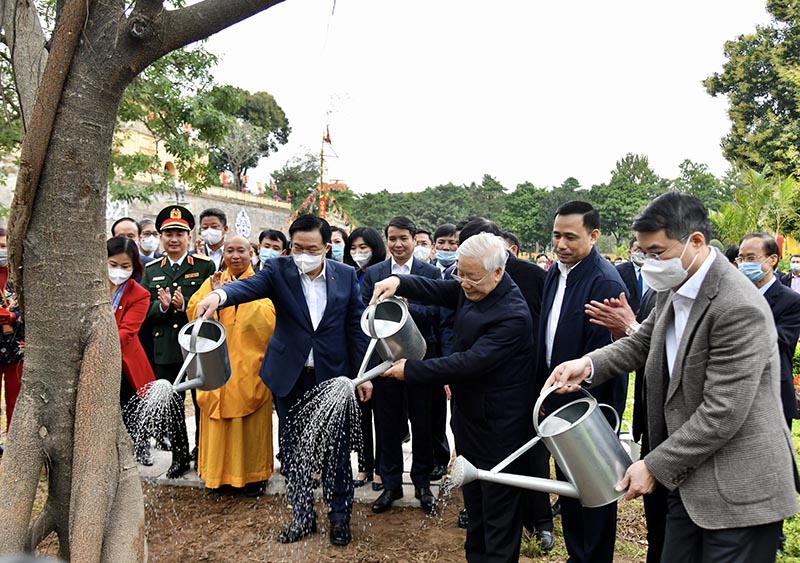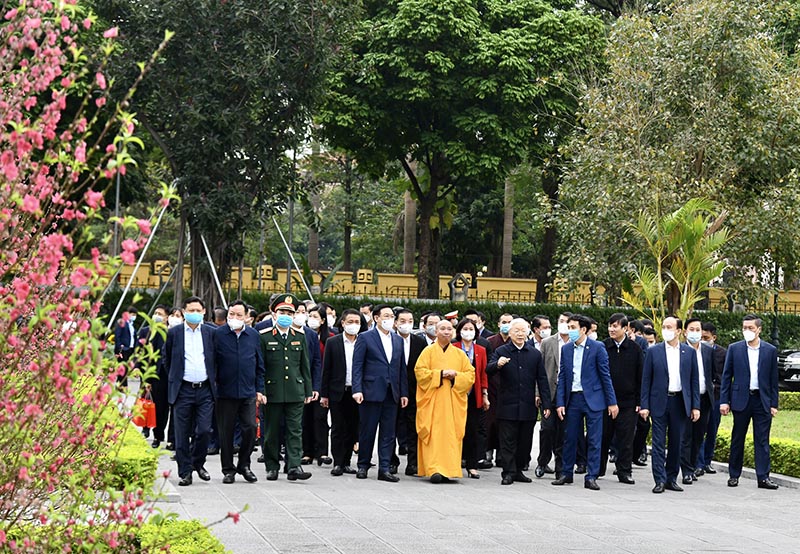Tree-planting festival: Meaningful campaign in Vietnam in New Year
Each locality plans to grow approximately one million trees in the year.
On February 17, Secretary General of the Communist Party of Vietnam (CPV) and State President Nguyen Phu Trong launched the campaign by planting trees at the Thang Long Imperial Citadel in Hanoi.
| Secretary General of the Communist Party of Vietnam (CPV) and State President Nguyen Phu Trong (3rd right) at the launching of the 2021 tree-planting festival. Photo: Thanh Hai/Kinhtedothi |
The Party chief was accompanied by Hanoi’s top leaders including Secretary of the Hanoi Party Committee Vuong Dinh Hue, Chairman of the Hanoi People’s Committee Chu Ngoc Anh, Permanent Deputy Secretary of the municipal Party Committee Nguyen Thi Tuyen, and Chairman of the People’s Council Nguyen Ngoc Tuan.
The campaign has been well responded by different localities nationwide. Hanoi alone, plans to grow roughly 500,000 trees together with developing 27,756 ha of forest and forest land.
Accordingly, each city and province plans to grow around one million trees in 2021.
Tree-planting festival is a long-lasting tradition on the New Year occasion that helps boost the green coverage in the nation that is listed among the hardest-hit by climate change.
It was initiated in 1959 by President Ho Chi Minh who laid the importance on the green coverage and keeping it for generations.
In the festival, people bring friends and families to share in the joyful activity of planting trees and being in the outdoors.
| Secretary General of the Communist Party of Vietnam (CPV) and State President Nguyen Phu Trong and leaders of Hanoi at the campaign. |
Role of forest in Vietnam
Vietnam possesses the diversity of forest ecosystem that includes evergreen broad-leaved forests, semi-deciduous forests on high and low mountains, mixed evergreen coniferous forest, mangroves, bamboos, among others.
But the over-exploitation and unsustainable management of forests have resulted in the sharp fall of forest area to 28% in 1995 from 43% in 1943.
Since then, the government has paid due attention to afforestation that prompt the forest area to nearly 40% so far. Although the forest area is on the rise, it is necessary to improve quality of the forest and to realize sustainable forest management and importance of biodiversity conservation, according to forest experts.











